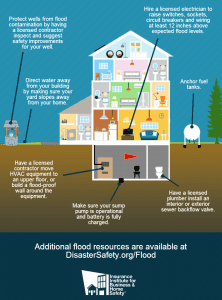Home Flooding
IS YOUR HOME FLOOD RESILIENT?
With the devastation of recent hurricanes on everyone’s mind, the dangers of flooding has taken on new urgency. Few of us think want to think about it happening in our backyards. Instead “out of sight, out of mind” though, a better strategy is “prepare for the worst, hope for the best.” Many agencies maintain checklists on what to do before and after a flood, including:
American Red Cross (http://www.redcross.org/get-help/how-to-prepare-for-emergencies/types-of-emergencies/flood)
Federal Emergency Management Agency ( https://www.fema.gov/media-library-data/1409002852888-3c5d1f64f12df02aa801901cc7c311ca/how_to_prepare_flood_033014_508.pdf)
Department of Homeland Security (https://www.ready.gov/floods
Many of us likely sought them out when we thought we might get a direct hit from Hurricane Irma. As good as those checklists are, however, we’d like to suggest one more with steps you can take to reduce the damage to your home in the event of a flood. It comes from the Institute for Business and Home Safety, a non-profit group supported by the insurance industry that does for buildings the same thing that the Insurance Institute for Highway Safety does for cars (crash tests.)
A detailed list is available at https://disastersafety.org/flood/reduce-flood-damage-to-homes/, but we want to display a great chart that illustrates these steps.

All of us hope that we never to cope with the ravages of a flood, but besides having flood insurance and perhaps a lot of sandbags, there are other steps we can take to keep our prized possessions even safer.
